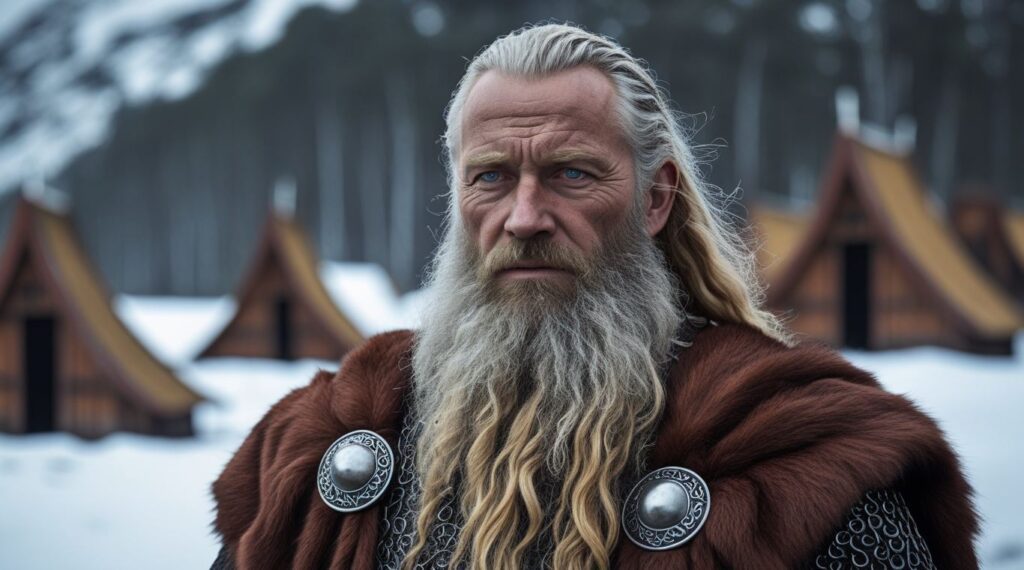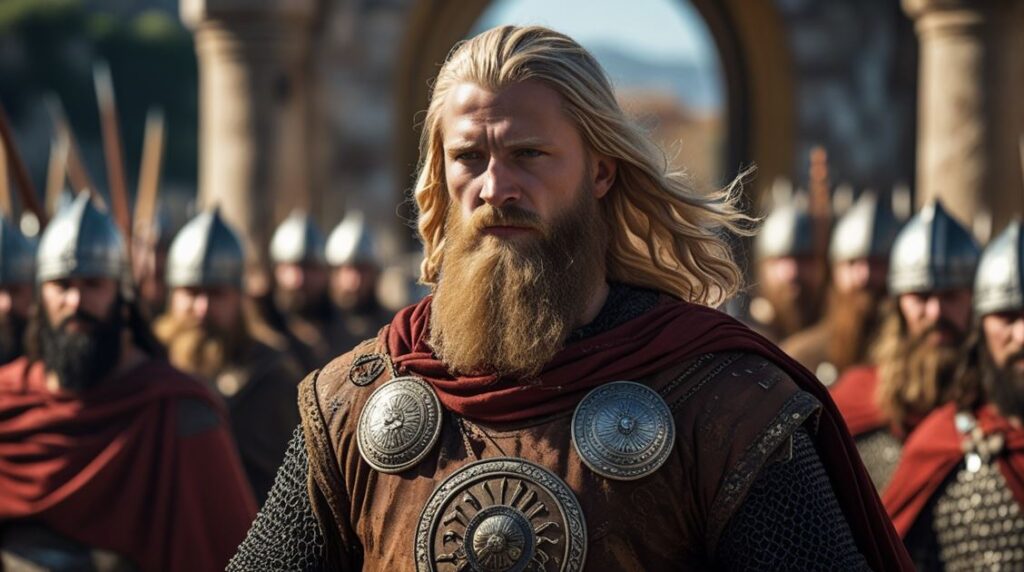In medieval history, few figures capture the imagination quite like Harald Hardrada – the “Thunderbolt of the North” and the last great Viking king.
His story reads like an epic fantasy novel, complete with battles, exile, and a journey that spanned from the fjords of Norway to the golden halls of Constantinople.
Read on to explore the extraordinary life of a Viking king who refused to be forgotten.
Harald Hardrada: The Making of a Legend
Born around 1015 in the Norwegian uplands, Harald Sigurdsson was destined for greatness from an early age. His father, Sigurd the Sow, was a regional king who preferred farming to fighting – a trait that earned him respect among his people but hardly suggested his son would become one of history’s most feared warriors.
Harald’s step-brother Olaf the Stout had already made his mark as King of Norway, ruling through a combination of Christian zeal and spectacular violence. The young Harald looked up to Olaf with fierce admiration.
According to the sagas, when three-year-old Harald sat boldly on King Olaf’s lap and tugged his mustache, Olaf declared, “Brother, you will be a fighter one day.” When asked what he wanted most in life, while his other brothers wished for fields and cattle, Harald proclaimed he wanted “house-carls so many they would eat all Halfdan’s cows at a single feast.”
Harald The Giant Emerges
By all accounts, Harald was an extraordinary physical specimen.
Standing seven and a half feet tall (though this may be saga exaggeration), he was described as handsome with flowing blonde hair.
The sagas paint him as the archetypal Viking hero: brutal in battle yet quick with a witty quip, composing poems in the face of death, and laughing at danger. This wasn’t mere bravado – it was a core part of Viking identity, the ability to find humor and poetry even in the darkest moments.
Betrayal and Catastrophe
By 1030, the political landscape had shifted dramatically. Canute, the powerful king of Denmark and England, had invaded Norway with fifty warships in 1028.
Unlike his brother’s earlier conquests, this invasion was welcomed by many Norwegians who had grown weary of Olaf’s harsh Christian rule.
Olaf fled into exile, spending two years gathering allies in the forests of what is now Russia. When he returned in 1030 with 200 Slavic mercenaries and Norwegian exiles, fifteen-year-old Harald begged to join the campaign.
The fateful Battle of Stiklestad on July 29, 1030, would change everything.
Olaf’s small army of 2,500 faced a force four times their size, led by local strongmen who feared the returning king and his foreign mercenaries would bring nothing but pillage and destruction.
Among the enemy commanders was the terrifying Thorer the Hound, who was reported to have carried a enchanted spear specifically meant to kill Olaf.
As the two armies clashed, the sky darkened in a total eclipse – the heavens themselves seeming to pronounce judgment. Despite the initial skill of Olaf’s veterans, sheer numbers told against them. In the melee, King Olaf fell, struck down by Thorer’s magic spear and finished by multiple wounds.
From Ashes to Exile
Young Harald, wounded and presumed dead among the piles of bodies, was rescued by Rognvald Bruseson, son of the Earl of Orkney. Hidden in a woodsman’s hut deep in the forest, Harald slowly recovered from his wounds while Thor the Hound’s men scoured the countryside for survivors.
Weeks later, disguised in a hooded cloak and traveling through the wilderness, Harald made his way to Sweden.
The teenage prince had become a fugitive, but his spirit remained unbroken.
In the spring following the disaster at Stiklestad, Harald and Rognvald hired a ship and sailed east into the Baltic – beginning an adventure that would take them through the vast trading networks of the Viking world.
For over 200 years, Vikings had been traveling these eastern routes, establishing a chain of forts and trading posts stretching 1,300 miles from the Baltic to the Black Sea. This was the land of the Rus – the kingdom of cities that would eventually give its name to Russia itself.
Their journey took them through places that seemed lifted from fantasy: across the Gulf of Finland to Lake Ladoga, Europe’s largest freshwater lake, then to the muddy frontier town of Staraya Ladoga – described by one historian as “a muddy riverine Deadwood with greater ethnic variety, plus swords and a multitude of gods.”
Harold Heads Into the Wild East
The route to Kiev led through a world that must have seemed like a fairy tale to young Harald.
They navigated networks of rivers, dragging their vessels around rapids and through forests filled with bandits and Slavic tribes. The journey required months of dangerous travel through what one chronicler called “the wild east.”
Novgorod, literally “New City,” was built entirely of wood – so completely that even surviving documents from the period are written on birch bark.
Further south lay Kiev, rising on bluffs above the Dnieper River, its walls marking the gateway to even greater adventures.
Here, Harald would find refuge with Prince Yaroslav of Kiev, himself of Scandinavian descent.
But this was only the beginning of an odyssey that would take the young exile to the very heart of the Byzantine Empire, where he would serve in the elite Varangian Guard and walk the marble halls of Constantinople.
Harald Hardrada: The Legend Begins
What began as a desperate flight from a lost battle would transform into one of history’s most remarkable adventures. The teenager who slunk through Swedish forests would emerge as a man who commanded armies, accumulated vast wealth, and ultimately returned to claim his throne.
Harald Hardrada’s journey from exile to legend embodies the final, blazing sunset of the Viking Age – a time when Scandinavian warriors could still carve out kingdoms with sword and axe, when the networks of trade and war connected the fjords of Norway to the markets of Byzantium, and when a young man’s courage and cunning could literally change the course of history.
The boy who once played with toy longships by a Norwegian stream would grow into the “Thunderbolt of the North,” leaving his mark on medieval Europe from Sicily to Armenia before meeting his destiny on the fields of England in 1066.
Further Reading
If you enjoyed this article, you may enjoy these:
- Cnut the Conqueror: How a Viking Became King of England
- Blood on St. Brice’s Day: Æthelred’s Viking Massacre
- The Fear of the Year 1000: Apocalyptic Anxieties
- Tribute or Treason? Æthelred’s Gamble with the Vikings
- Kings and Queens of England Ranked from Worst to Best
- Why was the crowning of Charlemagne so important?







